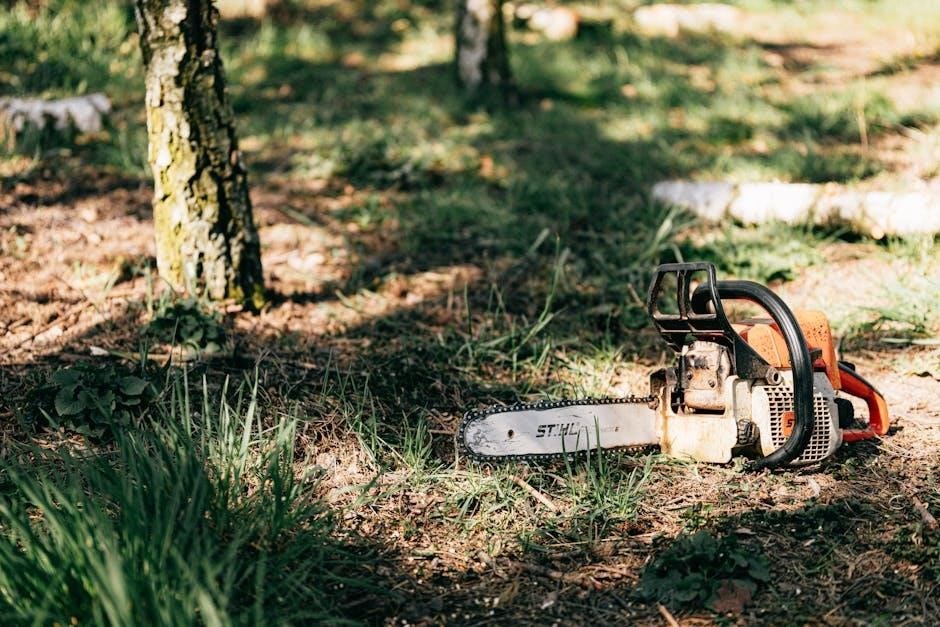Regular maintenance is crucial for the longevity and performance of your 2019 Subaru Forester. This schedule outlines essential services at specific intervals to ensure reliability and safety. Always follow the recommended timelines for oil changes, tire rotations, and inspections. Proper upkeep prevents costly repairs and maintains your vehicle’s optimal performance. Refer to the official Subaru maintenance guide for detailed instructions and intervals.
1.1 Importance of Regular Maintenance
Regular maintenance is essential for ensuring the longevity, reliability, and optimal performance of your 2019 Subaru Forester. It helps prevent unexpected breakdowns, reduces repair costs, and maintains safety on the road. By following the recommended schedule, you can identify and address potential issues early, ensuring your vehicle runs smoothly for years. Proper upkeep also preserves fuel efficiency, enhances overall driving experience, and helps maintain the vehicle’s value. Consistency in maintenance is key to protecting your investment and enjoying trouble-free ownership.
1.2 Overview of the 2019 Subaru Forester

The 2019 Subaru Forester is a compact SUV known for its reliability, all-wheel-drive capability, and robust safety features. It features a 2.5-liter boxer engine, delivering efficient performance and excellent fuel economy. With advanced technologies like EyeSight Driver Assist Technology, the Forester prioritizes safety and driver confidence. Its spacious interior and versatile design make it ideal for both urban commuting and off-road adventures. Understanding the vehicle’s features and capabilities is essential for maintaining it properly, ensuring it continues to perform at its best for years to come.
Recommended Maintenance Intervals
Regular maintenance for the 2019 Subaru Forester is scheduled at specific intervals to ensure optimal performance and longevity. Services are recommended every 6,000 miles or 6 months, with additional checks at 15,000 and 30,000 miles. Following these intervals ensures your vehicle remains reliable and safe on the road.
2.1 Every 6,000 Miles or 6 Months
At every 6,000 miles or 6 months, the 2019 Subaru Forester requires essential maintenance to ensure optimal performance. This includes replacing the engine oil and filter, rotating the tires, and checking fluid levels such as coolant and brake fluid. Additionally, inspect the air filter and cabin air filter for cleanliness. Brake pads should also be examined for wear. These routine checks help prevent potential issues and maintain the vehicle’s reliability. Always refer to the official Subaru maintenance schedule for precise instructions and recommendations.
2.2 Every 15,000 Miles or 12 Months
At 15,000 miles or 12 months, the 2019 Subaru Forester requires more comprehensive maintenance. This includes an emissions tune-up, inspection of the serpentine belt, and checks for the condition of hoses and suspension components. Additionally, the exhaust system should be inspected for leaks or damage. Brake pads and rotors should also be evaluated for wear. These services ensure the vehicle remains efficient and reliable. Always consult the Subaru maintenance schedule for specific details and recommendations tailored to your Forester.
2.3 Every 30,000 Miles or 24 Months
At 30,000 miles or 24 months, the 2019 Subaru Forester requires more in-depth maintenance. This includes replacing the engine oil and filter, inspecting the vehicle’s belts, and checking the suspension and steering components for wear. Additionally, the PCV valve should be replaced, and a full vehicle inspection should be performed to identify any potential issues. Drive belts should also be checked for cracks or damage, and the fuel system should be inspected for leaks or clogs. These services help maintain the vehicle’s performance and prevent major repairs down the road.

Tire Maintenance Schedule
Proper tire care ensures safety and performance. Rotate tires every 6,000 miles or 6 months to maintain even tread wear. Check tire pressure monthly, following the recommended levels in your owner’s manual, to optimize fuel efficiency and handling. Inspect tires for damage or wear regularly and replace them as needed to ensure consistent traction and vehicle stability.

3.1 Tire Rotation Recommendations
Subaru recommends rotating tires every 6,000 miles or 6 months to ensure even tread wear and optimal performance. This interval aligns with regular oil changes for convenience. Proper rotation prevents uneven wear patterns, which can lead to reduced traction and handling issues. Always follow the specific tire rotation pattern outlined in your owner’s manual to maintain your vehicle’s stability and safety. Regular inspections during rotations can also help identify potential issues early, ensuring your tires last longer and perform consistently.
3.2 Tire Pressure Checks
Subaru recommends checking tire pressure monthly and before long trips. Proper pressure, typically 35-36 psi for all tires, enhances safety, fuel efficiency, and handling. Underinflated tires can lead to uneven wear, reduced performance, and increased risk of failure. Always use the pressure specified in your owner’s manual, not the tire’s sidewall, as it’s tailored to your vehicle. Regular checks ensure optimal tire performance and contribute to overall vehicle reliability. Maintaining correct pressure is a simple yet crucial step in extending the life of your tires and ensuring a smooth driving experience.

Fluid Inspections and Replacements
Engine oil replacement is recommended every 7,500 miles. Coolant and brake fluid inspections are required every 15,000 and 30,000 miles, respectively, to ensure optimal performance and prevent damage.
4.1 Engine Oil and Filter Replacement
Engine oil and filter replacement are essential for maintaining your 2019 Subaru Forester’s performance and longevity. Subaru recommends replacing the engine oil every 7,500 miles or 12 months, whichever comes first. Use synthetic oil that meets Subaru’s specifications to ensure optimal engine protection, especially in extreme temperatures. Regular oil changes help prevent engine wear, improve fuel efficiency, and maintain the vehicle’s overall health. Always replace the oil filter during each service to ensure cleanliness and proper oil flow. Timely replacements prevent potential damage and keep your Subaru running smoothly for years.
4.2 Coolant and Brake Fluid Inspections
Coolant and brake fluid inspections are vital for ensuring your 2019 Subaru Forester operates safely and efficiently. Subaru recommends inspecting the coolant levels and condition every 15,000 miles or 12 months. Similarly, brake fluid should be checked for moisture and contamination at the same intervals. Proper coolant levels prevent overheating, while clean brake fluid ensures reliable braking performance. If contaminants or degradation are found, the fluids should be replaced promptly. Regular inspections help avoid costly repairs and maintain your Subaru’s reliability on the road.

Cabin Air Filter Replacement
Replace the cabin air filter every 15,000 miles or 12 months to ensure clean air circulation and reduce allergens. Refer to the Subaru maintenance guide for detailed instructions.
5.1 When to Replace the Cabin Air Filter
Replace the cabin air filter every 15,000 miles or 12 months to ensure clean air circulation and reduce allergens. If you notice reduced airflow or unpleasant odors, inspect and replace the filter. Refer to the Subaru maintenance guide for detailed instructions and recommendations specific to your 2019 Forester. Regular replacement improves air quality and maintains the comfort of your vehicle’s interior. Always use genuine Subaru parts for optimal performance and durability.

Brake System Maintenance
Regular inspections of brake pads, discs, and fluid are essential for safety. Inspect every 15,000 miles or 12 months, and replace worn components as needed.
6.1 Brake Pad Inspections
Brake pad inspections are critical for ensuring your 2019 Subaru Forester’s safety and performance. Subaru recommends inspecting brake pads every 15,000 miles or 12 months. During these inspections, technicians check for wear, damage, or uneven thinning. If pads are worn below the minimum thickness or show signs of damage, they should be replaced immediately. Proper brake function is essential for stopping power and driver safety. Always refer to the official maintenance schedule for specific guidelines and consult a qualified mechanic if issues are detected during inspections.
6.2 Brake Fluid Replacement
Brake fluid replacement is essential for maintaining the braking system’s performance and safety in your 2019 Subaru Forester. Subaru recommends replacing the brake fluid every 30,000 miles or 24 months. This service ensures optimal hydraulic pressure and prevents corrosion in the brake system. Always use genuine Subaru brake fluid to maintain quality and compatibility. It’s important to have this procedure performed by a professional mechanic to avoid contamination and ensure proper bleeding of the brake system. Regular brake fluid replacements help maintain reliable stopping power and overall vehicle safety.
Spark Plug Replacement
Spark plug replacement for the 2019 Subaru Forester is recommended every 30,000 miles to ensure optimal engine performance and fuel efficiency. Always use genuine Subaru spark plugs for compatibility and reliability. Proper installation is crucial to avoid engine misfires and maintain smooth operation. Follow the manufacturer’s guidelines for replacement intervals to keep your vehicle running at its best performance level.
7.1 Recommended Spark Plug Replacement Interval
The 2019 Subaru Forester recommends replacing spark plugs every 30,000 miles to maintain optimal engine performance and fuel efficiency. This interval ensures proper combustion and prevents misfires. Using genuine Subaru spark plugs guarantees compatibility and reliability. Ignoring this interval can lead to reduced performance, lower fuel efficiency, or engine damage. Always consult your owner’s manual or a certified Subaru service center for precise recommendations tailored to your vehicle’s condition and usage patterns. Timely replacement is essential for sustaining your Forester’s peak performance and longevity on the road.
Battery Maintenance
Inspect the battery terminals regularly to ensure clean and secure connections. Clean terminals if corrosion is present to maintain proper electrical system function and reliability.
8.1 Battery Terminal Inspection
Regularly inspect the battery terminals to ensure they are clean and free from corrosion. Corrosion can disrupt electrical connections, leading to starting issues or system malfunctions. Check for any signs of rust, dirt, or mineral buildup around the terminals. If corrosion is found, clean the terminals using a wire brush or a solution of baking soda and water. Proper maintenance of the battery terminals is essential for reliable engine performance and overall vehicle function. Schedule inspections every 12 months or as recommended by Subaru’s maintenance guide for optimal results.
Additional Tips for Subaru Forester Owners
Regularly review your maintenance schedule to stay on track. Keep a log of completed services for reference. Monitor dashboard warning lights, as they indicate potential issues. Always use genuine Subaru parts for replacements to ensure compatibility and performance. Be mindful of driving conditions, as extreme weather or off-road use may require more frequent servicing. Familiarize yourself with Subaru’s online resources for tips and updates. Proper care extends the life of your Forester and maintains its reliability on the road.
9.1 How to Access the Maintenance Schedule PDF
To access the 2019 Subaru Forester maintenance schedule PDF, visit the Subaru website and navigate to the Vehicle Resources page. Select your vehicle’s model year and type to view the official maintenance guide. The PDF provides detailed service intervals, recommended inspections, and replacement schedules. You can download it directly from the site for easy reference. This resource ensures you stay informed about all necessary maintenance requirements to keep your Forester in optimal condition. Regularly reviewing the PDF helps you track and plan upcoming services accurately.
9.2 Using Subaru’s Online Maintenance Tool
Subaru’s online maintenance tool simplifies tracking your Forester’s service needs. Visit Subaru’s website, select your vehicle’s model year, and enter its mileage. The tool generates personalized recommendations based on the official maintenance schedule. It provides a clear timeline for upcoming services, such as oil changes, tire rotations, and inspections. This feature ensures you never miss a scheduled maintenance interval, helping to keep your Forester in peak condition. Regular use of the tool promotes long-term reliability and prevents potential issues before they arise.
Adhering to the 2019 Subaru Forester maintenance schedule ensures optimal performance, reliability, and safety. Regular upkeep prevents costly repairs and extends the vehicle’s lifespan significantly over time.
10.1 The Importance of Sticking to the Schedule
Sticking to the 2019 Subaru Forester maintenance schedule is vital for ensuring optimal performance, reliability, and safety. Regular servicing prevents unexpected breakdowns, reduces repair costs, and maintains the vehicle’s value. By following the recommended intervals, you ensure all systems function as intended, optimizing fuel efficiency and overall driving experience. Neglecting scheduled maintenance can lead to premature wear and costly issues. Consistency in upkeep guarantees your Subaru Forester remains in peak condition, providing years of trouble-free driving and protecting your investment.